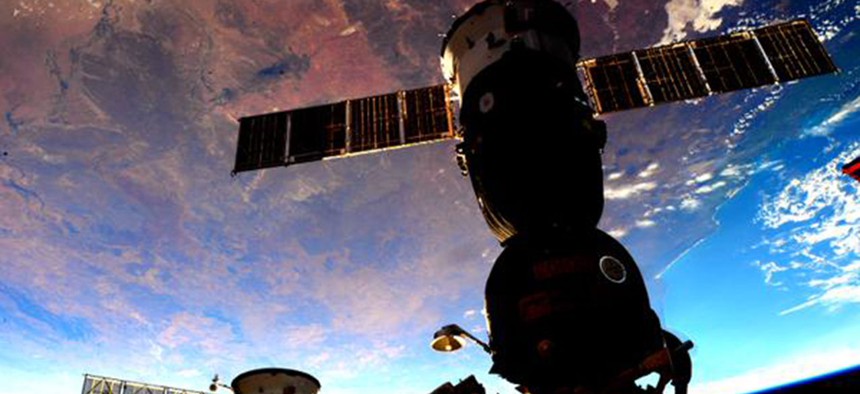Today marks the midpoint of NASA astronaut Scott Kelly and Russian cosmonaut Mikhail Kornienko’s one-year stay at the International Space Station. For the U.S., the yearlong mission is a first. It’s going to help scientists study what happens to the human body during long spaceflights, and they have a pretty great control subject to work with: Kelly’s identical twin brother back on Earth.

Scott Kelly via Twitter
Astronauts Mark Midpoint in One-Year Spaceflight
The data will come in handy if humans embark on long missions to other parts of the solar system, like Mars.
Today marks the midway point of my #YearInSpace! #ThankYou for your follows, waves, support & company along the way. pic.twitter.com/00VVXo5A4u
— Scott Kelly (@StationCDRKelly) September 15, 2015Life in low-Earth orbit is obviously nothing like life in Arizona, where Mark Kelly, a retired NASA astronaut who accumulated 540 days aboard the ISS, lives. One wild contrast: During his year aboard the station, Scott will experience about 20 times higher levels of radiation than Mark will on Earth (thanks, atmosphere and magnetic field!)
Scientists will use the twins to research human molecular responses to the physical, physiological, and environmental effects of microgravity. The data will come in handy if—or when, if you’re Buzz Aldrin—humans embark on long missions to other parts of the solar system, like Mars.
Scott has already experienced significant physical changes after six months in space. Without the pull of Earth’s gravity, astronauts’ spines expand, and they can become 3 percent taller. Muscles—no longer needed to support the body in the weightlessness of space—atrophy, and astronauts exercise two hours a day to maintain them. On Earth, gravity causes the fluids in our bodies to pool in our legs. Not so in space, where it floats up. After a year in space, NASA explains, two liters’ worth of fluid—or about a bottle of soda—will have shifted out of Kelly’s legs and toward his head.







